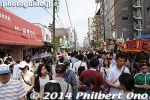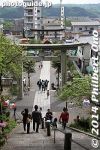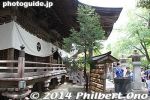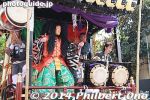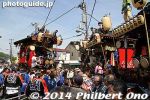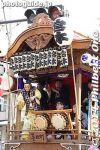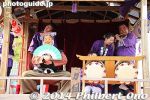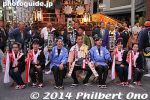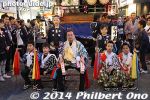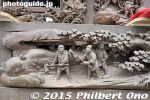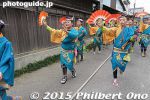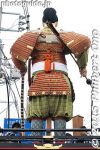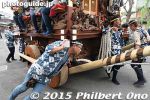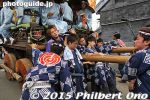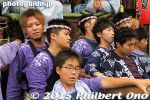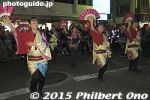 Image search results - "taisai" Image search results - "taisai" |

Held annually on May 2 and 3 in Ome, Tokyo, Ome Taisai has 12 ornate floats pulled along the main street near JR Ome Station. About 150,000 people come to see Ome's largest festival. This float festival has been held since 1872.
|
|

These photos were taken on May 3, 2014.
|
|

The festival is held near JR Ome Station on the Chuo Line.
|
|

Ome Taisai is held by Sumiyoshi Shrine in Ome, the city's main guardian shrine. Ome is a former post town along the Ome Kaido Road going from Shinjuku, Tokyo to Kofu, Yamanashi Prefecture.
|
|

On May 2, each float is paraded around their own neighborhood. The main day is May 3 when all the floats are pulled along this Kyu-Ome Kaido main road parallel to Ome Station from 9 am to 7:30 pm.
|
|
|

The floats have festival musicians and masked comical dancers performing.
|
|

My video of Ome Taisai festival in Tokyo.
|
|
|
|
|
|
|
|
|

Sumiyoshi Shrine
|
|
|
|

Sumiyoshi Shrine was established in 1369.
|
|

In 1513, parishioners from five neighborhoods (Sumie-cho, Honcho, Nakacho, Kamicho, and Morishita-cho 住江町、本町、仲町、上町、森下町) held a spring festival to celebrate their renovation of the shrine's Haiden hall.
|
|

This was the beginning of the Ome Taisai. In 1872, the five neighborhoods started to pull ornate floats during the festival.
|
|

After World War II, seven more floats representing other neighborhoods joined the festival. Most of the current floats were built relatively recently.
|
|
|
|
|
|
|

Wash basin
|
|

Sumiyoshi Shrine in Ome, Tokyo
|
|
|
|

Ome Taisai Floats Amagase-cho 天ヶ瀬町 Hinatawada 日向和田 *Honcho 本町 *Kamicho 上町 Katsunuma-cho 勝沼町 *Morishita-cho 森下町 Nishiwake-cho 西分町 *Nakacho 仲町 Oyana-cho 大柳町 *Sumie-cho (Miyamoto) 住江町 Takinoue-cho 滝
|
|
|
|
|
|
|
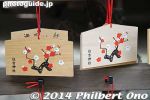
Ema prayer tablets
|
|

Tekomai child guardians lead the float processions.
|
|

Tekomai child guardian at Ome Taisai, Tokyo
|
|

Tekomai child guardian at Ome Taisai, Tokyo
|
|

The floats keep coming one after another on the main road near JR Ome Station.
|
|
|

Fox dancer and musicians.
|
|
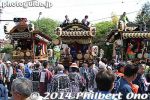
At large intersections, the floats gather for a joint jam session.
|
|
|
|
|
|
|
|

Tekomai
|
|

Tekomai
|
|
|
|
|
|
|
|
|
|
|

Tekomai dressed in kimono were hot since it was a hot spring day with a strong sun. A mom sprays coolant on this boy's head.
|
|
|
|

Tekomai at Ome Taisai
|
|
|
|

Each float represents a neighborhood of Ome.
|
|
|
|
|

The main road is very crowded, but they still can make way for all the floats passing through.
|
|

Here and there in Ome you see these nostalgic Showa-Era signs and buildings.
|
|
|
|
|
|
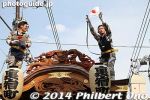
They make sure the floats don't hit power lines or collide with any roofs and other floats. They attach themselves to a safety rope.
|
|

Joint jam session near JR Ome Station.
|
|
|
|
|
|
|

Rooftop carvings are also nice.
|
|
|
|
|

Taiko drummer at Ome Taisai, Tokyo
|
|

Taiko drummer at Ome Taisai, Tokyo
|
|
|
|

Crowd in front of JR Ome Station
|
|
|
|

Neighborhood headquarters houses a life-size doll.
|
|

The five original floats were much taller with three tiers topped with a large doll like this. Overhead power lines installed in 1911 forced the floats to downsize and remove the dolls.
|
|

Those five dolls are instead displayed in their respective neighborhoods during the festival.
|
|

The main road further west is less crowded.
|
|

Another stationary entertainment stage.
|
|

This part of town has more traditional buildings.
|
|
|

Post office
|
|
|
|
|
|
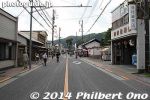
Almost no people here because they are crowded around a joint jam session further down.
|
|
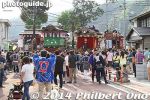
Six floats gathered here for a joint performance.
|
|
|
|
|

Shishimai lion dancer
|
|
|
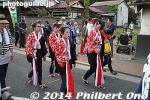
After the joint jam session, the floats proceeded back to town.
|
|

One of the floats led by tekomai.
|
|

The former Inaba family residence from the Edo Period. The house includes a traditional kura storehouse. The Inaba family were successful merchants and Ome village elders. The house also exhibited one of the large dolls originally mounted on a float.
|
|

On the way back to town, each float turned toward this house and performed for a while. Interesting how some of the floats can swivel.
|
|
|
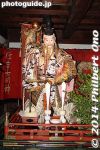
In the Inaba house was this doll. The floats were paying its respects to it.
|
|
|
|

Inaba house
|
|

About the Inaba family house. Inaba-ke Jutaku
|
|

Part of the Inaba house is this kura storehouse in the back. Built around 1886. Not open to the public.
|
|
|
|
|
|

Back of tekomai
|
|
|
|
|

The floats paid its respects to another doll housed here.
|
|
|
|
|
|

The festival finale was held in front of this Shimin Kaikan Hall.
|
|
|

Floats arrived and performed with other floats.
|
|
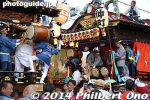
Ome Taisai
|
|
|
|
|
|

In front of Shimin Kaikan.
|
|

More floats arriving for the finale in front of Shimin Kaikan.
|
|
|

A few floats also gathered near JR Ome Station.
|
|

Wooden clappers signal the start of the float's procession.
|
|
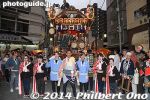
Near JR Ome Station, a few floats posed for photos.
|
|
|

Tekomai
|
|
|
|

Ome Taisai
|
|
|
|
|
|
|
|
|
|
|
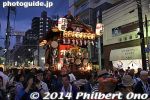
In the evening, they light up the paper lanterns.
|
|

Two floats head for JR Ome Station.
|
|
|

The festival ended at 7:30 pm. Enjoyed it very much.
|
|

Ome Taisai poster for 2014
|
|

The Sawara no Taisai Autumn Festival has ornate floats paraded around Sawara in Oct. Floats (called dashi) are about 7 meters high and weigh 3 to 4 tons. The floats have intricate wood carvings and a large doll depicting a historical or legendary Japanese figure. Each float is from a neighborhood in Sawara. Most of the floats and dolls were made in the late 19th century or early 20th century. Held near JR Sawara Station (JR Narita Line) and along Ono River's traditional townscape. These photos were taken on Oct. 10, 2015.
|
|

My Youtube video of Sawara Autumn Festival taken in Oct. 2015.Dating back 300 years, the festival is held for three days in July (10 floats) and Oct. (14 floats). The float pullers also dance and the main highlight is when they turn the float a few times. The festival is a National Important Intangible Folk Cultural Property. In fall 2016, it will be one of the 33 Yama, Hoko, and Yatai float festivals in Japan to be inscribed as a UNESCO Intangible Cultural Heritage.
|
|
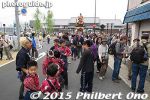
Sawara Autumn Festival held in Oct. in Katori, Chiba. Shonanko (Kusunoki Masatsura) float from Shimowake 下分 in front of JR Sawara Station.Shimowake 下分
|
|

Float pullers.
|
|

Shonanko (Kusunoki Masatsura) float from Shimowake 下分 in front of JR Sawara Station.
|
|

Food stall area
|
|
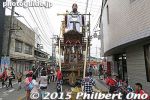
Emperor Jimmu float from Nakagashi 仲川岸.
|
|

Emperor Jimmu float from Nakagashi 仲川岸.
|
|

Emperor Jimmu float from Nakagashi 仲川岸.
|
|

Wooden carvings on Emperor Jimmu float from Nakagashi 仲川岸.
|
|
|
|
|
|

Emperor Jimmu float from Nakagashi 仲川岸.
|
|
|

Minamoto no Yoshitsune float from Kamijuku 上宿.
|
|

Minamoto no Yoshitsune float from Kamijuku 上宿.
|
|

Minamoto no Yoshitsune float from Kamijuku 上宿.
|
|
|
|

Float pullers also dance and sing (wasshoi!) when the float stops. Minamoto no Yoshitsune float from Kamijuku 上宿.
|
|
|
|
|
|
|
|
|
|
|
|
|

Float pullers/dancers at Chinzei Hachiro Tametomo float from Kaminakajuku 上中宿.
|
|

Float pullers/dancers at Chinzei Hachiro Tametomo float from Kaminakajuku 上中宿.
|
|

Float pullers/dancers at Chinzei Hachiro Tametomo float from Kaminakajuku 上中宿.
|
|

Float pullers/dancers at Chinzei Hachiro Tametomo float from Kaminakajuku 上中宿.
|
|

Sawara Autumn Festival in Katori, Chiba. Float pullers/dancers shout "wasshoi" at Chinzei Hachiro Tametomo float from Kaminakajuku 上中宿.
|
|

Float pullers/dancers at Chinzei Hachiro Tametomo float from Kaminakajuku 上中宿.
|
|
|
|
|
|
|
|
|
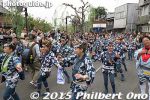
Dainanko (Kusunoki Masashige) float from Higashi Sekido 東関戸.
|
|

Dainanko (Kusunoki Masashige) float from Higashi Sekido 東関戸.
|
|

Dainanko (Kusunoki Masashige) float from Higashi Sekido 東関戸.
|
|
|
|
|

Suwa Daijin float from Kami Shinmachi 上新町.
|
|

Shonanko (Kusunoki Masatsura) float from Shimowake 下分.
|
|

Shonanko (Kusunoki Masatsura) float from Shimowake 下分.
|
|

Dainanko (Kusunoki Masashige) float from Higashi Sekido 東関戸.
|
|

Dainanko (Kusunoki Masashige) float from Higashi Sekido 東関戸.
|
|

Dainanko (Kusunoki Masashige) float from Higashi Sekido 東関戸.
|
|

Sawara Autumn Festival in Katori, Chiba. Dainanko (Kusunoki Masashige) float from Higashi Sekido 東関戸.
|
|
|

Ushi Tenjin float from Shin-Uwagashi 新上川岸.
|
|

Ushi Tenjin float from Shin-Uwagashi 新上川岸.
|
|
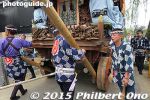
Ushi Tenjin float from Shin-Uwagashi 新上川岸.
|
|
|
|

Ushi Tenjin float from Shin-Uwagashi 新上川岸 trying dodge obstacles.
|
|
|
|
|

Sawara Autumn Festival in Katori, Chiba. Ushi Tenjin float from Shin-Uwagashi 新上川岸.
|
|
|
|
|

Ushi Tenjin float from Shin-Uwagashi 新上川岸.
|
|
|
|

Emperor Nintoku float from Minami-yokojuku 南横宿.
|
|

Emperor Nintoku float from Minami-yokojuku 南横宿.
|
|
|
|

Shonanko (Kusunoki Masatsura) float from Shimowake 下分.
|
|
|
|
|

Shonanko (Kusunoki Masatsura) float from Shimowake 下分.
|
|

Shonanko (Kusunoki Masatsura) float from Shimowake 下分.
|
|
|
|
|
|

Marks on the road left by float wheels.
|
|
|

Shrine maidens.
|
|

From around 4 pm, they started parking the floats to put on paper lanterns.
|
|

Yamato Takeru-no-Mikoto float from Kita Yokojuku 北横宿.
|
|

Local supermarket and rest stop.
|
|

From 5 pm, the floats came to this intersection to perform the no-no-ji mawashi turn. のの字廻し
|
|
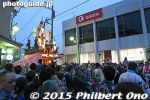
Yamato Takeru float arrives at the intersection.
|
|

Yamato Takeru-no-Mikoto float from Kita Yokojuku 北横宿.
|
|
|
|

This float danced at the intersection too.
|
|
|

Ono-no-Tofu 小野道風 float from Shin-Hashimoto 新橋本.
|
|
|
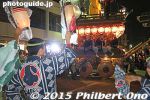
They shout "wasshoi!"
|
|

With great fanfare, the floats turned a few times at the intersection before it proceeded.
|
|
|

I couldn't stay until the endsince I had to catch mytrain back to Tokyo.
|
|
|
|








